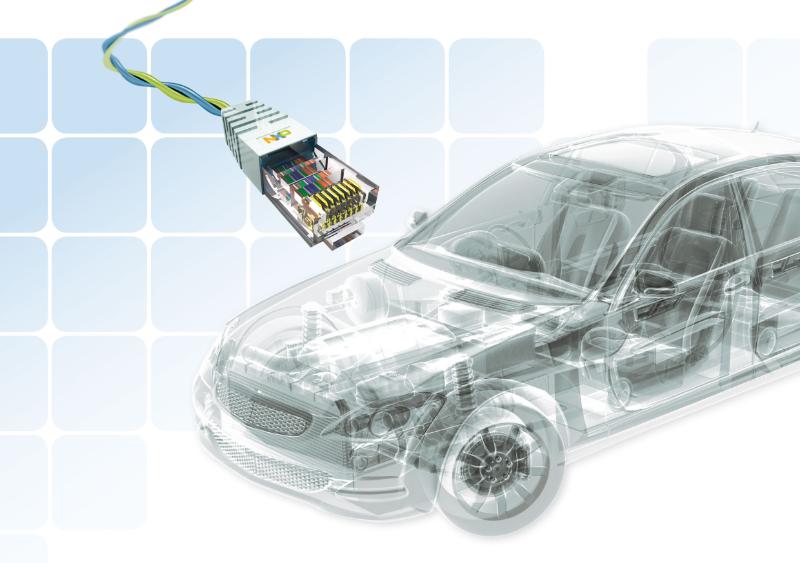The modern automobile has become much more than a mode of transportation. With the rise of advanced driver assistance systems (ADAS), autonomous vehicles, and the Internet of Things (IoT), today’s cars are more like mobile computing platforms. And just like any computer system, the communication between components plays a critical role in the performance and safety of the vehicle. That’s where Automotive Ethernet comes in.
Ethernet, the ubiquitous networking technology used in offices and homes, is making its way into the automobile. By leveraging the speed, reliability, and scalability of Ethernet, Automotive Ethernet promises to enable a new generation of connected vehicles that are safer, more efficient, and more enjoyable to drive.
What is Automotive Ethernet?
It is a networking technology designed specifically for use in cars. It is based on the same Ethernet standard that powers most wired computer networks, but with modifications to meet the unique requirements of automotive applications.
The modifications include reduced electromagnetic interference (EMI), time-sensitive networking (TSN), and robustness and reliability. These modifications ensure that Automotive Ethernet can operate in the harsh conditions that are typical of cars, such as extreme temperatures, vibration, and moisture.
Reduced Electromagnetic Interference
Cars are noisy environments, with many sources of EMI that can interfere with network communication. Automotive Ethernet uses specialized cabling and connectors to minimize EMI and ensure reliable data transmission. The use of unshielded twisted-pair (UTP) cabling is one of the ways that Automotive Ethernet reduces EMI. UTP cabling uses four pairs of wires, with each pair twisted together to reduce interference. The pairs are then grouped together in a particular way to further reduce interference. The connectors used in Automotive Ethernet are also designed to minimize EMI. They have a shield that surrounds the contacts and cable, which helps to block EMI.
Time-Sensitive Networking
In a car, some data is more time-critical than others. For example, information from the brakes or steering system needs to be transmitted with minimal delay to ensure quick and accurate response times. TSN is a set of standards that enables Ethernet to provide real-time, deterministic communication, making it suitable for these critical applications. TSN provides several mechanisms to ensure that critical data is transmitted with minimal delay. One of these mechanisms is time synchronization. TSN uses a master clock to synchronize the clocks of all the devices on the network. This ensures that data is transmitted at the correct time, which is critical for real-time applications. TSN also provides mechanisms for bandwidth reservation and traffic shaping. These mechanisms ensure that critical data is given priority over non-critical data.
Robustness and Reliability
Cars are subject to harsh operating conditions, including extreme temperatures, vibration, and moisture. Automotive Ethernet must be able to withstand these conditions and continue to function reliably. It achieves this by using specialized components that are designed to operate in harsh environments. The cabling used in Automotive Ethernet is more robust than that used in traditional Ethernet. It is designed to withstand high temperatures, vibration, and moisture. The connectors used are also designed to be more robust than traditional Ethernet connectors.
Benefits of Automotive Ethernet
By adopting Ethernet as the primary communication technology for in-car systems, Automotive Ethernet brings several benefits over traditional wiring technologies such as CAN (Controller Area Network) and LIN (Local Interconnect Network).
- Higher bandwidth: Ethernet supports much higher data rates than traditional automotive buses, which means that more data can be transmitted in less time. This is particularly important for ADAS and autonomous driving applications that require large amounts of sensor data to be processed in real-time.
- Reduced wiring complexity: Ethernet uses a single network infrastructure for multiple systems, reducing the amount of wiring required in the car. This simplifies the design, reduces weight, and lowers costs.
- Scalability: Ethernet is a well-established and widely used technology, which means that it benefits from economies of scale. As the technology evolves, new features and capabilities can be added without requiring a complete overhaul of the system.
Applications
It is already being used in several applications in today’s cars, and its use is expected to grow rapidly in the coming years.
- ADAS: Advanced driver assistance systems (ADAS) such as lane departure warning, blind spot detection, and automated emergency braking rely on a constant stream of sensor data to operate. Automotive Ethernet provides the high bandwidth and low latency required to support these systems, enabling faster and more accurate decision-making.
- Infotainment: Today’s cars are also becoming entertainment platforms, with in-car multimedia systems that provide a wide range of features such as music streaming, internet browsing, and video playback. Automotive Ethernet provides the high bandwidth and low latency required to support these applications, ensuring a seamless user experience.
- Autonomous driving: Autonomous driving is the ultimate goal of the automotive industry, and Automotive Ethernet is a key enabler. By providing high-speed, reliable, and real-time communication between the various components of the autonomous driving system, Automotive Ethernet enables the car to make decisions based on a complete picture of its surroundings.
Challenges and Future of Automotive Ethernet
While there are several benefits, there are also challenges to its adoption and implementation. In this section, we will discuss some of the challenges and the future of Automotive Ethernet.
Challenges
Standardization
One of the biggest challenge is standardization. Ethernet has been a well-established standard for several decades in computer networks, but the unique demands of the automotive industry require modifications to the standard. As a result, several organizations have proposed different versions of Automotive Ethernet, and the lack of a single, unified standard can lead to interoperability issues.
Cost
The adoption of new technology often comes with an increased cost, and Automotive Ethernet is no exception. The specialized cabling, connectors, and components required for Automotive Ethernet are more expensive than traditional automotive buses, such as CAN and LIN. This cost can be a barrier to adoption, particularly for low-end vehicles.
Complexity
Automotive Ethernet is a more complex technology than traditional automotive buses. The increased complexity can make it harder to design, test, and troubleshoot systems that use Automotive Ethernet. This complexity can also make it more difficult for repair technicians to diagnose and fix problems, leading to increased repair costs.
Future
Despite the challenges, the future is bright, and it is expected to play a significant role in the future of the automotive industry. Here are some of the developments and trends to watch out for:
Standardization
Several organizations, including the IEEE, the Open Networking Foundation, and the Avnu Alliance, are working on standardizing Automotive Ethernet. The goal is to create a single, unified standard that can be adopted by the entire industry. This standardization will lead to interoperability, lower costs, and easier integration of different systems.
Higher Data Rates
As the amount of data generated by sensors and systems in a vehicle increases, so does the need for higher data rates. The current version of Automotive Ethernet supports data rates of up to 10 Gbps, but future versions are expected to support even higher data rates. This will enable the adoption of more advanced ADAS and autonomous driving systems.
Integration with 5G
5G, the next generation of wireless communication technology, is expected to revolutionize the way vehicles communicate with each other and with the surrounding infrastructure. Automotive Ethernet is expected to play a significant role in this revolution by providing the wired backbone for 5G connectivity. By integration with 5G, vehicles will be able to communicate with each other and with the cloud in real-time, enabling new applications and services.
Conclusion
Automotive Ethernet is a technology that is driving innovation in the automotive industry. Its ability to provide high bandwidth, real-time communication, and reliability is making it the technology of choice for in-car communication. While there are challenges to its adoption, including standardization, cost, and complexity, the future is bright. With the ongoing standardization efforts and the integration with 5G, we can expect to see even more advanced ADAS and autonomous driving systems that will make driving safer and more efficient.




Hi colleagues, how is all, and what you would like to say abiut this article, in my view its really amazing in favor
of me.